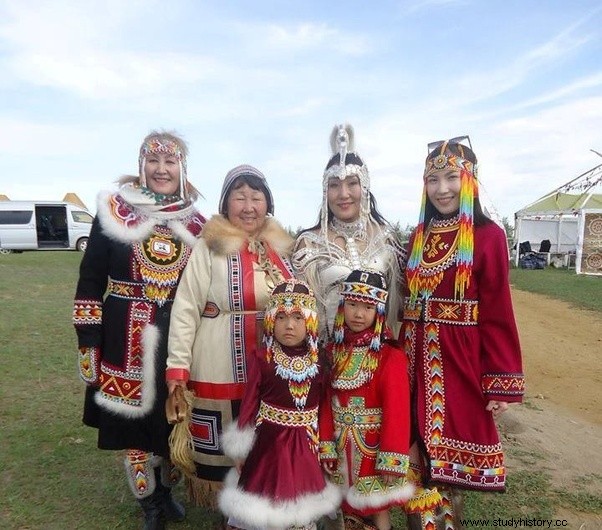
Living in Europe, North Africa and parts of Asia, a collection of ethnic groups is collectively known as the Turkish people. According to research, the earliest Turkish people are descendants of agricultural communities from Northeast China. At the end of the 3rd millennium BC. moved these communities to Mongolia and adopted a pastoral lifestyle. Towards the 1st millennium BC. the groups had become equestrian riders. Over the following centuries, many ethnically diverse groups became part of the Turkish people through conquest, language change, religious conversion, adoption, and intermingling. Some Turks share cultural traits, historical experiences and ancestry from a common gene pool. Today, the most notable Turkish-speaking ethnic groups include Turkish people, Uyghur people, Uzbeks, Kazakhs, Kyrgyz and Turkmers, and Azerbaijanis.
Turkish mythology
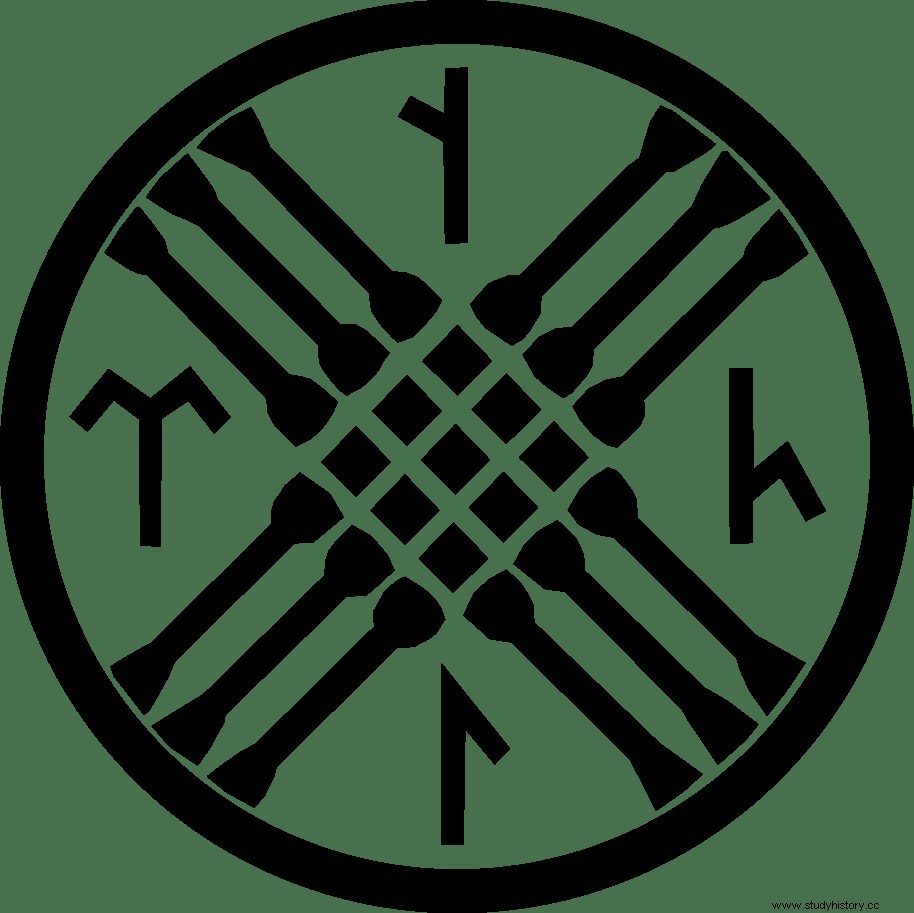
The main aspects of Turkish mythology stem from the groups' belief in Tyrrhenia, Animism and Shamanism, along with a number of other social and cultural beliefs that arose due to their nomadic existence. Later, especially after the Turkish migration, many myths were embellished to some extent due to the influence of Islamic symbolism. Turkish mythology shares many common points with Mongolian mythology, and it is believed that these took shape when a nationalist mythology was synchronized with Tibetan Buddhist elements. Other local mythologies have also played a role in influencing Turkish mythology.
During the early days of the Turks, they practiced all the major religions of the time, such as Christianity, Buddhism, Judaism and Manichaeism. A majority of them converted to Islam. Elements from these religions were always synchronized with their prevailing mythological beliefs.
Deities in Turkish Mythology
Personified creative and ruling forces, gods are always at the forefront of Turkish mythology. The Turkish belief system does not have a pantheon of deities, such as Greek or Roman polytheism. In modern Western usage, many of the gods are believed to be more like spirits or angels traveling between humans and their settlements in the spiritual realm. The Turkish people believed in İye or guardian spirits who controlled specific natural elements. Other entities include Geniens or genies (Çor) and demons (Abasi).
Connector
The first of the original deities of the early Turkish people, Kök Tengri, is the Creator God (yüce or yaratıcı tengri.) When the Turks began to migrate and leave Central Asia, they were influenced by monotheistic religions. Tengrism, a religion of pagan or polytheistic origin, became more similar to Zoroastrianism after the change. Of the many original gods, there were only two left - Tengri (the good god) and Erlik (the evil god in the underworld). Uçmag was a place like heaven or Valhalla.) Tengri controls the fate of all people and acts freely. His will is what determines people's well-being. He is just when he rewards and punishes. The physical description of Tengri is still unknown.
Other gods
While Tengri is the first and most important deity in Turkish mythology, there are also a number of other deities that they worship.
Umay is Tengri's daughter. She is the goddess of virginity and fertility. Her name is an indication of her powers - in the Turkish language, the Turkish root 'umāy' originally means 'placenta, postpartum'. Umay similar to the earth or the mother goddesses of various other religions. Tengri has three sons who are also deities. Öd Tengri is the ruler or god of the time. Boz Tengri, Tengri's other lesser known son, is the god of the steppes and grounds. Tengri's third son, Kayra, is the Spirit of God. He is the primordial god of the upper sky, the highest heaven, space, light and atmosphere.
Kayra has three sons. The moose is the god of goodness. He controls all Aruğ (Arı) or the good spirits in Altaic and Turkish mythology. They perform good deeds on earth. Ülgen's brother, Mergen, is the god of mind and intelligence. Sitting on the seventh floor of heaven, it is believed that he knows and can afford everything. Sitting two floors above him in the sky is Mergen's brother, Kyzaghan, the god associated with war. Depicted as strong, powerful and young, he rides a red horse with a spear. Other deities include Ak Ana or the White Mother, the original creator goddess of the Turkish people.
Symbols in Turkish Mythology
The Turkish nomadic lifestyle, culture and other world religions have influenced much of their mythology. Some of them are as follows.
The horse is one of the main characters in Turkish mythology. Horses are extremely important to them - they consider the horse to be an extension of a person (usually attributed to the male). A person is considered complete with his own horse. This may have led to the Turkish people being called 'at-bey' or horse lord.
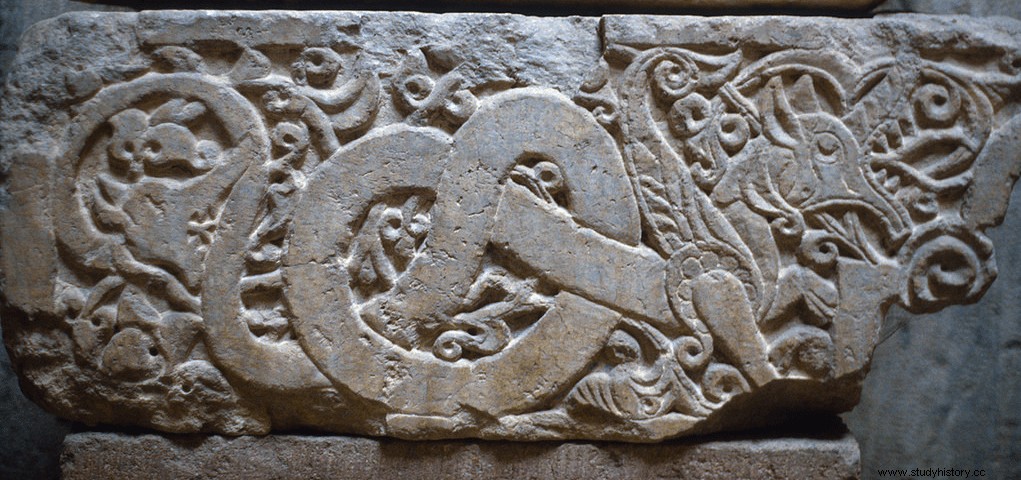
The dragon (Evren or Ebren) is also made as a lizard or snake. It is the symbol of power and might. The Turkish people, especially those living in the mountainous region of Central Asia, believe that dragons live in the mountains of Tengri Tagh and Altay. In ancient Turkish tradition, dragons symbolize the god Tengri, but the dragons themselves were not worshiped as gods.
Central to Turkish mythology is the World Tree or the Tree of Life. The Altay Turks believe that humans are descendants of trees, while the Yakuts believe that the white mother sits at the foot of the tree of life. The branches of the tree extend up to the sky and various supernatural beings have made themselves at home among the branches. The blue sky around the tree indicates the peaceful atmosphere of the country. A red ring surrounds all the elements, and represents the Turkish belief in rebirth, development and growth.
Among the animals, the Turkish people believed that the deer was the mediator between the earth (humans) and the spiritual realm (the gods.) During burial ceremonies, it is therefore an important ritual to sacrifice a deer. The deer's soul is believed to be a psychopomp (a guide of souls to the place of the dead.) The soul of the deer is accompanied by the deer's spirit to the underworld or Tamag. This deer motif in Turkish mythology appeared in the 13th century tale of the Sufi mystic Geyiklü Baba (meaning 'father deer') from Khoy. In recent years he retired to the mountainous forests of Bursa and lived his life as an ascetic. Different sources carry different stories about Geyiklü Baba-one telling how he rode deer and wandered around in nature with herds of deer, dressed in leather.
Legends of Turkish Mythology
The Legend of the Gray Wolf
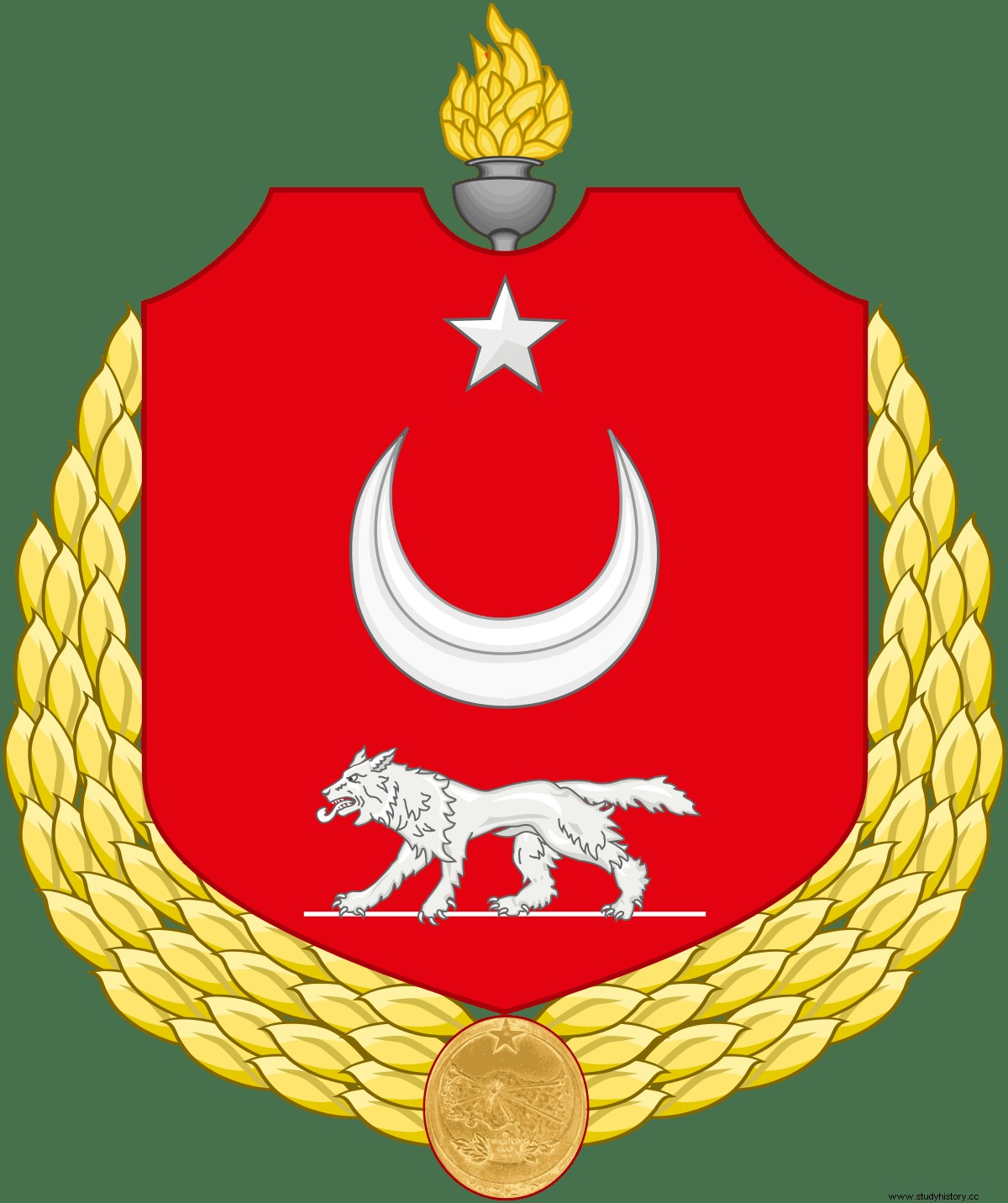
In Turkish mythology, a mythical wolf gave birth to ten sons, one of them named Asena. The wolf is a symbol of honor and is considered, by most of the Turkish people, to be their mother.
According to legend, a young boy was the only one who survived a raid on his village. A female wolf finds the wounded boy and nurses him back to health. He later impregnates the wolf, who flees from his enemies by crossing the West Sea and seeks refuge in a cave near the Qocho Mountains. She gives birth to ten creatures - half wolf and half human. Asena, one of the offspring, grows up to be their leader and establishes the Asena clan, which ruled the Turkish nomadic empires. Later, the first Turks migrated to the Altay region.
Ergenekon -legende
The Ergenekon legend tells of a great crisis in the time of the ancient Turks. After a military defeat, the Turks retreated to the legendary Ergenekon Valley where they remained captured for four centuries. It was a blacksmith who eventually helped them escape by making a passage by melting the rock. It was Asena who led the Turks out. A ceremony is held on New Year's to honor the Turks' legendary escape from Ergenekon.
Mythology about Siberian Turks
The Turkish people of Siberia are the ones who kept the mythology the most lively and colorful. To this day, they worship the holy spirits of Tyrrhism and continue to keep their legends alive. For example, Dolgans, who live in the Tundra region in the far north of Siberia, came across mammoth corpses during their nomadic migrations. These animals have not been thawed from the earth for more than 10,000 XNUMX years. According to Dolgans, Erlik, the lord of the underworld, took the mammoths to his home so they could serve him. These mammoths were always trapped in the underworld, and those who tried to escape back to earth would freeze to death and be buried as punishment. The mammoths' bodies that they encountered from time to time would be half buried in the ground, half out.
Yakuts and other Siberian Turks believe that both good and evil spirits are present who control the blessings of the Turks. To keep the spirits happy, prayers and sacrifices are performed.
Buddhist Turkish mythology
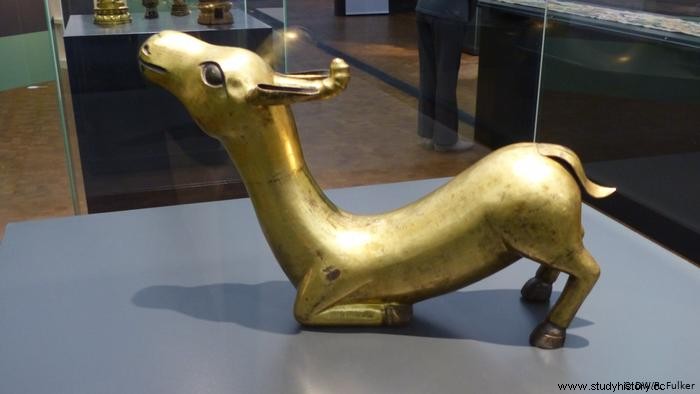
In the 9th century, the Turkish people adopted Buddhism, and based on this religion, they developed the first major Turkish culture to be established. The Uighur monks translated thousands of writings from Buddhism from Sanskrit and Chinese into Turkish. At that time, many foreign legends were translated into Turkish and ancient Turkish epics, and the story was also written down. The largest library of the period was built in the city of Khotan, which was unfortunately destroyed when the Kyrgyz attacked (ethnic groups regularly fought battles and raided each other.) Very few of the pages telling the story and the Turkish epics were left, but these few pages show how detailed and comprehensive the books was before they were destroyed. Among the pages that remain are legends that describe material life as evil.
According to some stories in Turkish mythology, the Buddha was reincarnated in other forms, such as the gazelle. One of the stories tells how a ruler hunted and killed thousands of gazelles with his men. The leader of the gazelles was a golden gazelle who, after repeated warnings to the ruler to straighten his ways, punishes the men.
Influence of Turkish mythology in Europe
The migrations of the ancient Turkish people to Europe have led to their mythologies being integrated into several parts of Europe. The themes of many stories and epics are the Huns and proto-Bulgarians or Turkish Bulgarians. School children are taught the saga of Asparuh, which the Turkish Bulgarians brought to the Balkans. During the spring festival "March Mother", plays are staged that show the story of Asparuh, with children playing the roles of the characters.
The story tells how Asparuh Khan founded the first Bulgarian state and wanted to make a dedication to Tengri, the creator god. But to do that, he needed to burn dill (an herb) in a sacred ritual. Could not find dill anywhere, it was Asparuh's sister from the Volga coast who sent him a bunch of dill. She did this by tying it to the feet of a hawk and sending it to Asparuh. To this day, the Turkish people consider the hawk to be an important animal in mythology. In some epics, the Hun Atila is also the main subject.
Other epics of Turkish mythology
Some of the other epics from Turkish mythology include
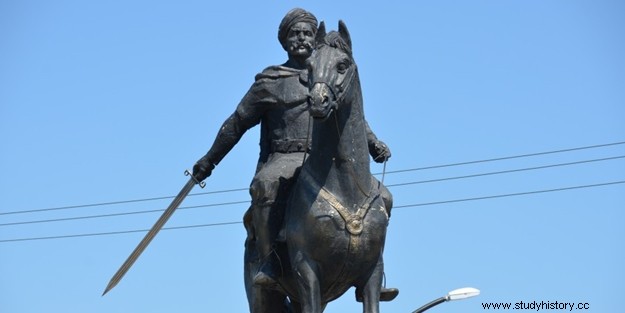
- Epic of Manas:The epic tells the story of Manas and his descendants, who carry out business against their enemies. The epic is divided into three books. The first tells the story of Manas, while the second and third cover the lives of Semetei (Manas' son) and Setek (grandchildren)
- Battal Gazi:A Muslim saint figure, Seyyid Battal Gazi, was a warrior from Anatolia. The epic about Battal Gazi is based on the real ruler and companies of Abdallah al-Battal, an 8th-century military leader in Umayyad. The legends are an important part of Turkish folk literature.
- Epic about Köroğlu:Epic about Koroghlu is a heroic tale that has an important place in the oral folklore of the Turkish people, mainly the Oghuz Turks. The legend is about a hero who does justice to every wrong action. The story is often set to music and played at sports competitions to inspire the competing athletes. Koroghlu is the main character in the epic. He is one who fights against unjust rulers and performs heroic deeds. Many Turks consider him a Robin Hood-like figure. The migration of the Oghuz Turks and their assimilation with other ethnic groups has made the Epic of Koroghlu an immensely popular story. Danishmend Gazi:Danishmend Gazi was the Turkmen general and later the founder of the Dannishmendene. 'The Tale of Danishmend' is an epic romance from the 13th century in Turkish that tells the story of the life of Danishmend Gazi, together with the companies of Seyyid Battal Gazi and Abu Muslim, a Persian hero.
the conclusion
Mythology and its numbers are an important part of the daily life of the Turkish people. Every ethnic group, no matter how small, has legends and stories about their lineage and lineage. Sometimes there is not much difference between groups' religion and mythological beliefs. Today, Turkish mythology plays an interesting and important role in influencing other cultures as well.
